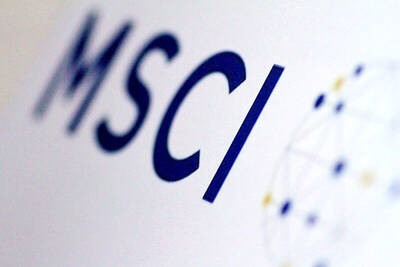Europe's practicing Muslims have finally found their fit: An Italian clothes firm is producing jeans that are tailor-made for the Islamic world.
The trousers, licensed by an Udine-based firm named Al Quds, are the brainchild of Luca Corradi, an Italian stylist.
"I couldn't help noticing that Muslims bend down to pray several times a day. This movement is not very common in our culture," Corradi told reporters last week.
Higher waist
Corradi realized that Muslims would find Western jeans uncomfortable. So he came up with trousers that are less tight and have a higher waist.
Because Muslims usually take off their watches, glasses and other personal objects during prayer, he also designed larger pockets.
Finally, the seams are made in green -- a sacred color in the Islamic world -- while the shabby look so popular in Western Europe is snubbed.
On Italy's shelves as from last week, the jeans cost 18 euros (US$21).
Because they are being sold by a major French supermarket chain, they should soon find a distribution channel in other European countries as well.
But Al Quds, which is the Arab name for Jerusalem, has also set its sights on the Middle East.
"Our stylist is looking for some help among his Arab colleagues. We hope they will help us start producing a wider range of trousers in the not so distant future," Cavalli said.
Strictly commercial
Asked about the current controversy which surrounds the publication by Western newspapers of cartoons of the Muslim prophet Mohammed, Cavalli said that the Al Quds initiative was "primarily commercial, rather than political."
However, she said that it was time to put an end to the traditional association between jeans and the US.
"Not many people know that jeans were first invented in the Italian city of Genoa, some 200 years ago," Cavalli said.
The jeans should find plenty of buyers among Italy's 700,000 Muslims.

PERSISTENT RUMORS: Nvidia’s CEO said the firm is not in talks to sell AI chips to China, but he would welcome a change in US policy barring the activity Nvidia Corp CEO Jensen Huang (黃仁勳) said his company is not in discussions to sell its Blackwell artificial intelligence (AI) chips to Chinese firms, waving off speculation it is trying to engineer a return to the world’s largest semiconductor market. Huang, who arrived in Taiwan yesterday ahead of meetings with longtime partner Taiwan Semiconductor Manufacturing Co (TSMC, 台積電), took the opportunity to clarify recent comments about the US-China AI race. The Nvidia head caused a stir in an interview this week with the Financial Times, in which he was quoted as saying “China will win” the AI race. Huang yesterday said

Japanese technology giant Softbank Group Corp said Tuesday it has sold its stake in Nvidia Corp, raising US$5.8 billion to pour into other investments. It also reported its profit nearly tripled in the first half of this fiscal year from a year earlier. Tokyo-based Softbank said it sold the stake in Silicon Vally-based Nvidia last month, a move that reflects its shift in focus to OpenAI, owner of the artificial intelligence (AI) chatbot ChatGPT. Softbank reported its profit in the April-to-September period soared to about 2.5 trillion yen (about US$13 billion). Its sales for the six month period rose 7.7 percent year-on-year

MORE WEIGHT: The national weighting was raised in one index while holding steady in two others, while several companies rose or fell in prominence MSCI Inc, a global index provider, has raised Taiwan’s weighting in one of its major indices and left the country’s weighting unchanged in two other indices after a regular index review. In a statement released on Thursday, MSCI said it has upgraded Taiwan’s weighting in the MSCI All-Country World Index by 0.02 percentage points to 2.25 percent, while maintaining the weighting in the MSCI Emerging Markets Index, the most closely watched by foreign institutional investors, at 20.46 percent. Additionally, the index provider has left Taiwan’s weighting in the MSCI All-Country Asia ex-Japan Index unchanged at 23.15 percent. The latest index adjustments are to

CRESTING WAVE: Companies are still buying in, but the shivers in the market could be the first signs that the AI wave has peaked and the collapse is upon the world Taiwan Semiconductor Manufacturing Co (TSMC, 台積電) yesterday reported a new monthly record of NT$367.47 billion (US$11.85 billion) in consolidated sales for last month thanks to global demand for artificial intelligence (AI) applications. Last month’s figure represented 16.9 percent annual growth, the slowest pace since February last year. On a monthly basis, sales rose 11 percent. Cumulative sales in the first 10 months of the year grew 33.8 percent year-on-year to NT$3.13 trillion, a record for the same period in the company’s history. However, the slowing growth in monthly sales last month highlights uncertainty over the sustainability of the AI boom even as